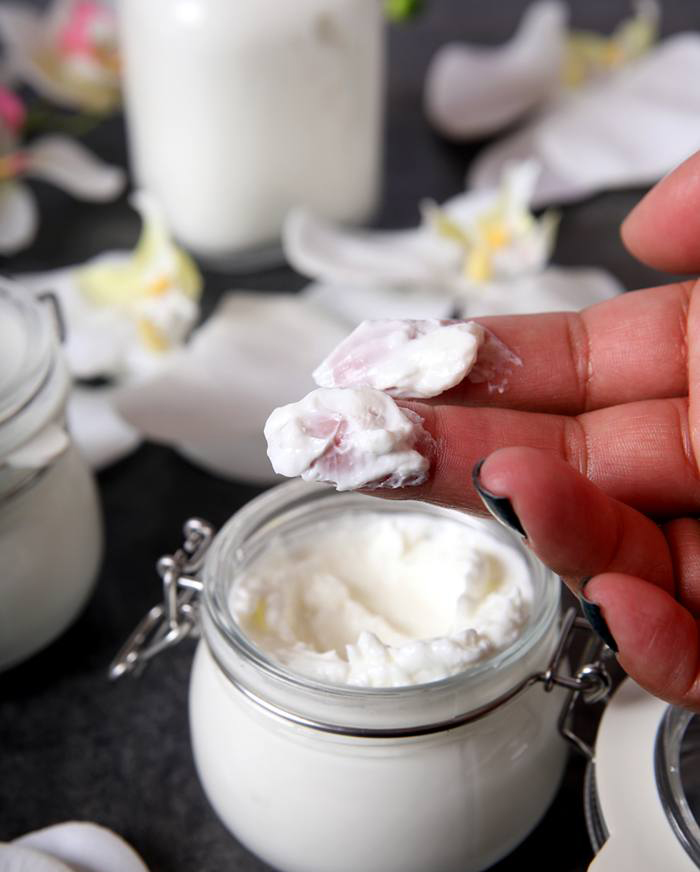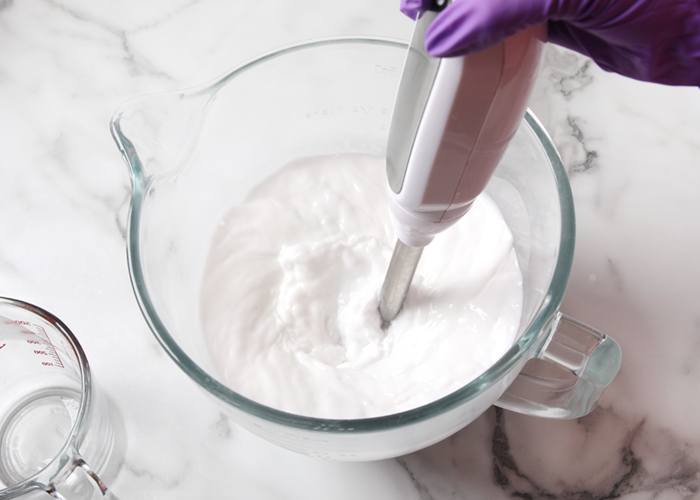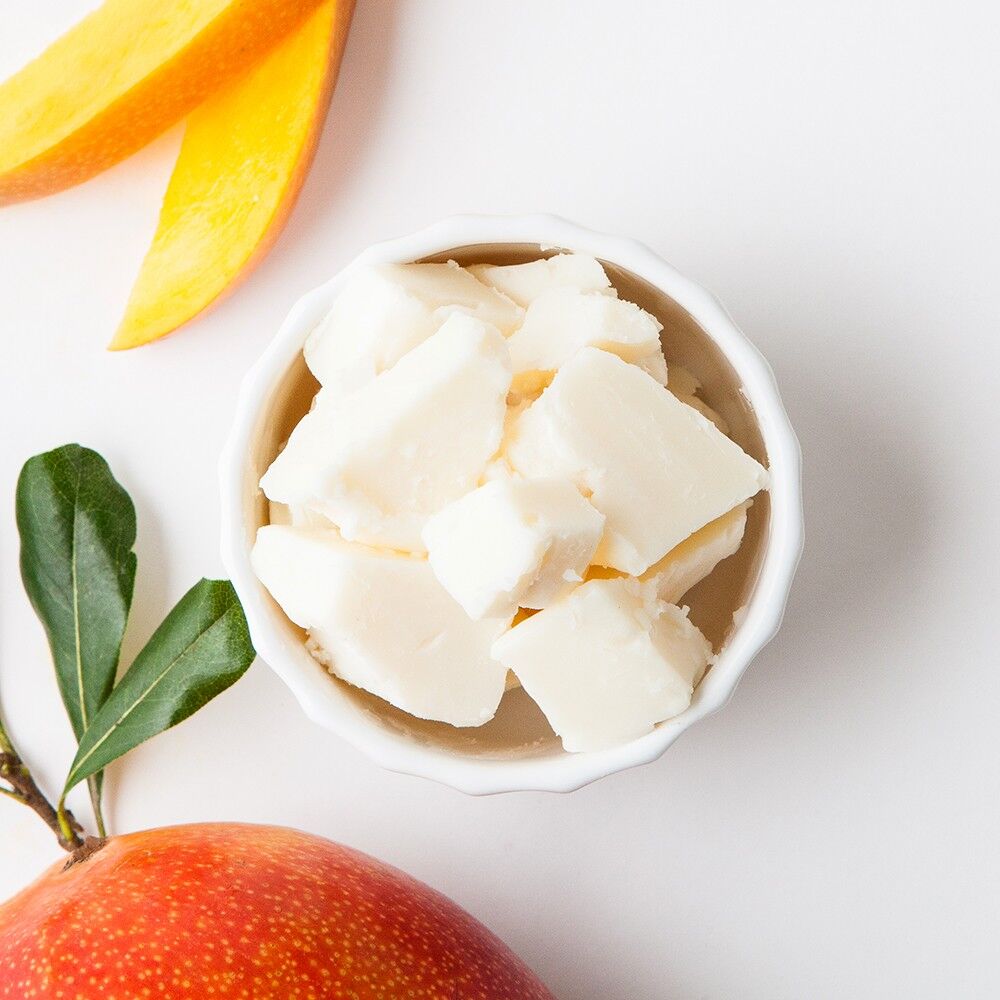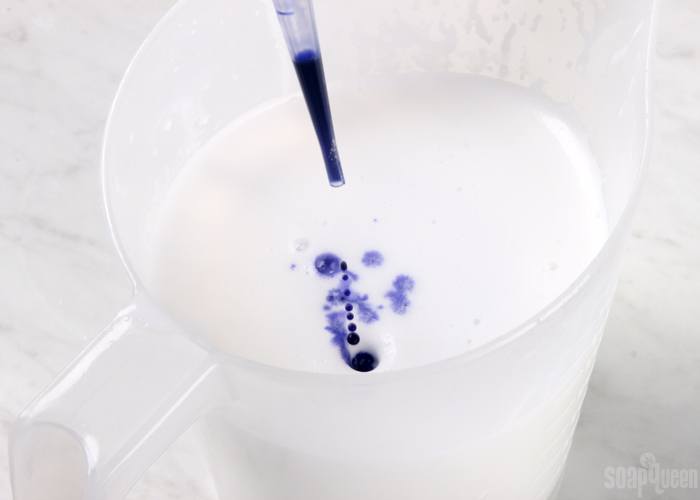
Once you learn the basics of making lotion from scratch, the process is easy. All you have to do is combine oil, water, and an emulsifier. Then you can customize the recipe with your favorite skincare oils and additives.
Below, we go over common ingredients and what properties they add. Find everything you need to make lotion here.
Here's a general formula for creating lotion:
70-80% Distilled Water
3-6% Emulsifier
3-5% Co-Emulsifier
8-23% Oils and Butters
1% Preservative
Water and other liquids
Typically, lotion is made with distilled water. It gives recipes a lightweight consistency that absorbs quickly into the skin. It's important not to use tap or purified water because they can have microbes or bits of metal.
There are other options that add something special! Try a botanical liquid like aloe, jasmine essential water, lavender essential water, cucumber essential water, rose water, or aloe vera liquid. Choose something that has been distilled or purified and already contains a preservative. If you add a fresh ingredient like tea, it can grow mold.
For the same reason, we don't recommend using milk in lotion. If you leave a carton of milk on the counter, it will go bad eventually. The same will happen to your lotion. That's the case even with a preservative - they protect against mold and bacteria but they don't extend the shelf life of milk. The longest shelf life you can expect is 2-4 weeks, and that's only if you store the lotion in the fridge.
Emulsifiers
- Emulsifying wax: This is a great option for most recipes. It's the generic version of Polawax, so it's cost-effective and keeps everything mixed together.
- Polawax Emulsifying Wax: Get this one if you need something heavy duty. We love it for masks because it ensures the clay doesn't break the emulsion.
- Bio-Mulsion Wax: This is a plant-based option for lotion, emulsified scrub, and conditioner.
- BTMS-50 Conditioning Emulsifier: Along with emulsifiying products, BTMS-50 adds conditioning properties. That makes it a popular choice for DIY hair products.
- We don't recommend polysorbate 80 and polysorbate 20 as the primary emulsifiers in lotion. Instead, they're used as fragrance and essential oil solubilizers.

Co-Emulsifiers
- Stearic acid: This vegetable-based product helps thicken lotion and keep the emulsion stable. It can also be used to harden cold process soap.
- Cetearyl alcohol and cetyl alcohol: Like stearic acid, these help thicken and stabilize emulsions. They add a nice emollient texture as well.
Common oils and butters
- Sweet almond oil: This moisturizing oil is full of fatty acids. It adds a lightweight consistency to lotion. Other lightweight options include avocado oil, apricot kernel oil, argan oil, and jojoba oil.
- Olive oil: This is a thicker oil that's great for dry or sensitive skin. Other mediumweight options include rice bran oil and canola oil.
- Shea butter: Butters add a thick and luxurious consistency to lotion. You can add any kind you like, including avocado butter or mango butter.

Preservatives
This is a necessary ingredient. Preservatives prevent mold and bacteria growth in lotion. We love Optiphen or Phenonip at 1% of the total weight. Add them when the lotion is 160° F or cooler, otherwise they can degrade.
We're often asked about natural preservatives. We've tested a few options, but we haven't found one that's as effective as Optiphen or Phenonip. If you want to keep your recipe natural, try body butter instead. Learn more about the difference between lotion and body butter here.
Colors, fragrances, and additives
Now that you've got the base recipe down, the sky's the limit when it comes to additives. Try extracts, glycerin, honeyquat, and more. In general, a good place to start is 1 teaspoon of something extra per pound of lotion. Our product pages also have usage rates and instructions.
Adding scent is easy - just use our Fragrance Calculator to find out how much to use. You can use any of our fragrance oils, which are all skin safe. You can also use most essential oils, just make sure to check the product descriptions. Some options, like cinnamon and clove, can't be used in leave-on products.
For color, liquid dyes like Lab Colors are the way to go. Just add a few drops to the warm lotion and stir to fully incorporate. Lab Colors need to be diluted before use - learn how to do that here. We don't recommend pigments because they sink to the bottom of containers and can leave streaks on the skin. Micas can sink too, but they are lighter. Just give the bottle a good shake before each use to distribute the color.

Ready to get started making lotion? Try these projects!

